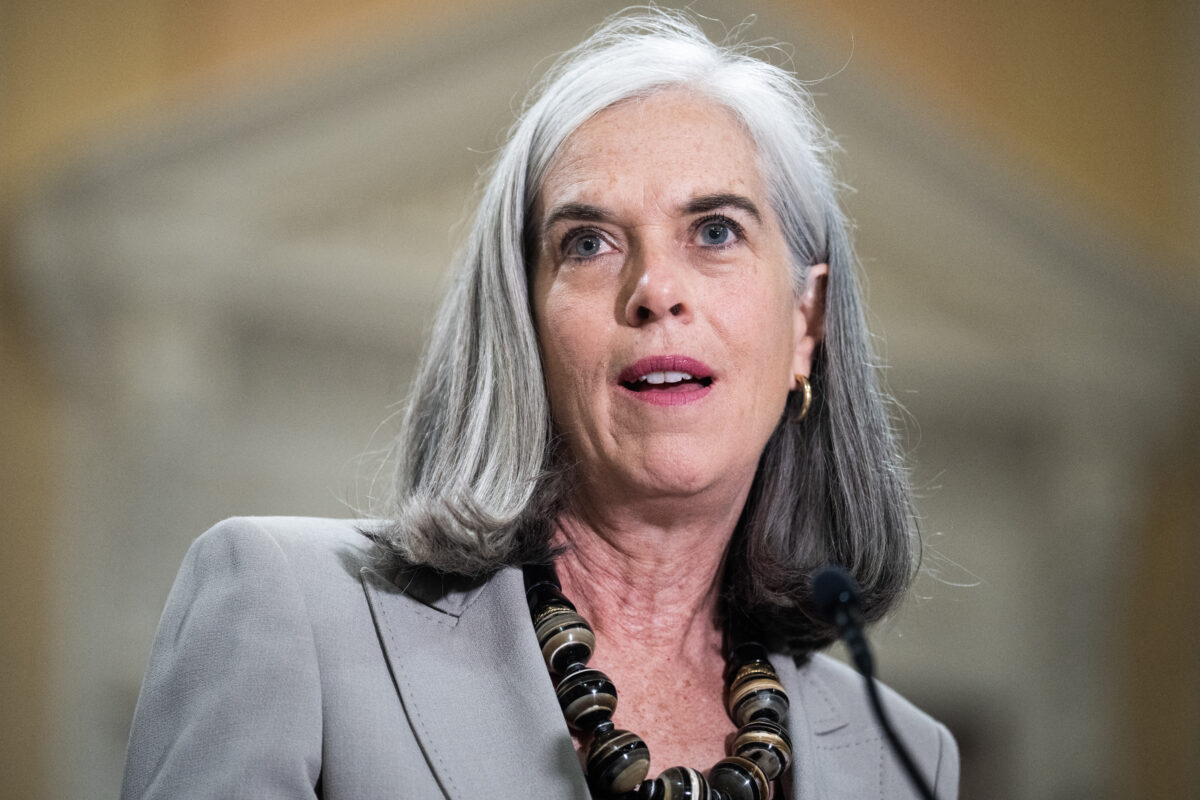Union Pacific: Railcar Leak Caused 30-Ton Ammonium Nitrate Loss
Commercial freight carrier Union Pacific Corp. reported that a leak in a sealed hopper railcar hauling 60,000 pounds of ammonium nitrate most likely caused the chemical to disappear during transit in early April.
A Union Pacific spokesperson told The Epoch Times that the company’s four-month investigation wrapped up on Aug. 21 and that the company ”fully cooperated with authorities.”
The spokesperson said that “all the available evidence suggests this was a leak that occurred from transportation from origin to destination.”
Related Stories
- Explosion in Union Pacific’s Massive Railyard in Nebraska Appears Accidental, Investigators Say – 9/19/2023
- Federal Railroad Administration Cited Serious Safety Concerns Days Before Union Pacific Explosion – 9/16/2023
“Such a leak is unlikely to pose any risk to public health or the environment,” the spokesperson said. “Union Pacific has no reason to believe any criminal or otherwise malicious activity took place during transport.”
On May 10, explosives manufacturer Dyno Nobel filed an incident report with the U.S. Environmental Protection Agency’s (EPA) National Response Center after finding the entire rail car empty of its contents in Saltdale, California.
The sealed Union Pacific railcar left the company’s Cheyenne, Wyoming, facility on April 12, traveling 800 miles to its final destination.
Ammonium nitrate is a chemical in agricultural fertilizers that provides nitrogen for plant growth. It’s also used in small quantities to manufacture explosives and other products.
Leak Suspected
Dyno Nobel suspected that a leak through a bottom gate on the multi-compartment hopper car might have developed during transit.
“The initial assessment is that a leak through the bottom gate on the railcar may have developed in transit—releasing pellets totaling approximately 60,000 pounds onto the tracks over the two-week trip,” a company spokesperson wrote in May.
According to New York-based Nortech Labs, ammonium nitrate isn’t harmful under normal handling conditions.
However, inhaling high concentrations of ammonium nitrate dust can cause respiratory tract irritation and irritate the eyes, nose, and skin.”
While ammonium nitrate’s rating is nonflammable, the company noted that it’s a “strong oxidizing agent” that can make combustible materials catch fire.
“Only under extreme conditions of heat and pressure in a confined space will ammonium nitrate explode,” it stated. “Should such an incident occur, there may be a visible cloud of ammonia, carbon dioxide, and nitrogen oxides.”
In June 2015, the EPA, Occupational Safety and Health Administration, and Bureau of Alcohol, Tobacco, Firearms, and Explosives issued an advisory regarding the potential for explosions involving ammonium nitrate.
While incidents involving ammonium nitrate are rare, “they can have severe consequences,” the advisory stated.
One incident occurred on April 17, 2013, when a fire at an ammonium nitrate storage and distribution facility in West, Texas, caused an explosion that killed 15 people, injured more than 250, and damaged several buildings.
Officials at the EPA and Dyno Nobel didn’t respond by press time to a request by The Epoch Times for comment.
Dyno Nobel is a global commercial explosives manufacturer, producing more than 54 million pounds of packaged explosives and about 1.2 million tons of ammonium nitrate capacity.
The company operates in 32 facilities with more than 3,770 employees.
The U.S. Department of Transportation’s Federal Railroad Administration told The Epoch Times the EPA hasn’t responded to the incident “due to ammonium nitrate [common fertilizer] not being listed as a hazardous substance under federal law.
“EPA’s role generally is to get involved when incidents raise hazardous substance issues. That said, we are prepared to provide assistance should it be requested.”
How does this incident emphasize the importance of safety protocols and procedures in the transportation industry, specifically for hazardous materials
Nitrate is a stable compound that does not typically evaporate or disappear on its own. Therefore, the leaked chemical is believed to have been lost during transportation.
Authorities and experts were called in to investigate the incident and determine the cause of the leak. Union Pacific Corporation, a major commercial freight carrier, conducted a thorough investigation that lasted for four months, concluding on August 21. Throughout the process, the company fully cooperated with the authorities.
Based on the available evidence, Union Pacific’s spokesperson stated that the most likely cause of the chemical disappearance was a leak that occurred during transportation from the origin to the final destination. The company has no reason to believe that any criminal or malicious activity took place during the transport.
It is worth mentioning that such a leak is unlikely to pose any risk to public health or the environment, according to the spokesperson. Although ammonium nitrate can be potentially hazardous, the amount lost in this incident is not significant enough to cause concern.
The incident was first reported on May 10 when explosives manufacturer Dyno Nobel filed an incident report with the U.S. Environmental Protection Agency’s National Response Center. They discovered that the entire railcar, which had been sealed by Union Pacific, was empty of its contents upon arrival in Saltdale, California.
The railcar had traveled a distance of 800 miles, starting from Union Pacific’s facility in Cheyenne, Wyoming. During the journey, it is suspected that a leak occurred through a bottom gate in the multi-compartment hopper car, causing the pellets of ammonium nitrate to be released onto the tracks gradually.
Ammonium nitrate is commonly used in agricultural fertilizers to provide nitrogen for plant growth. It is also utilized in small quantities for the production of explosives and other products. Although the leaked amount may seem substantial, it is essential to consider that ammonium nitrate is a stable compound and does not easily evaporate or disappear on its own.
As investigations into this incident continue, it is crucial for Union Pacific and other stakeholders in the transportation industry to thoroughly review their safety protocols and procedures. This incident highlights the need for continuous vigilance in ensuring the safe transport of hazardous materials.
" Conservative News Daily does not always share or support the views and opinions expressed here; they are just those of the writer."





